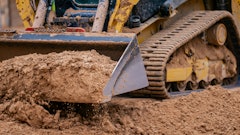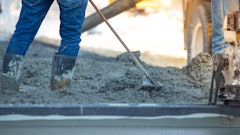
Over the past couple of months, we have discussed productivity, especially how larger construction companies are making concentrated efforts to improve productivity and spending levels. A couple of real-world examples I have seen had results in the 50%-60% range. Can you imagine that? A 50% improvement on what you have been consistently doing in the past. Must be fun preparing bids for this operation.
But no matter what size your company is, you have to assume competitors are looking for ways to improve productivity and leaving you in the dust, if and when you both bid on the same contract.
The way I see it is, every process, every payroll dollar and all expense categories have to be reviewed to determine how the spend compares to your past practices, current practices and projected practices. On the revenue side, you find ways to bill more in a given time period.
I know this must sound like a monumental task, and in some ways, it will be, but doing so is a must because your industry as a whole is changing, forcing everyone to do more with less. You either become more productive or you lose work, and even, potentially, the company you worked so hard to build.
The definition of productivity:
PRODUCTIVITY = TOTAL OUTPUT/TOTAL INPUT
In other words, how much are you getting back for every dollar you spend? This is a simple enough formula that you can apply to your company, a job, a portion of job, laborers, internal departments, personnel and any process used in your company. The task involved in such a process has to start at the top and work its way down. You decide what you want to measure and then calculate or have someone provide the output/input numbers and see how they come out. Then you check it again, and again until you are satisfied that your metrics are valid, and once you reach this goal, you can take steps to either improve the output and/or reduce the input. And once you start measuring performance in the field, you will find that field management will not want to produce productivity results below the expected goal. You know what they say--investigate and then verify.
A straightforward way to start this process is to measure revenues/full-time equivalent employees (FTE) and gross profits/FTE employees. You can do this for a year, a quarter or a month. One way that is most informative is to use a trailing 12-month cycle (every month end you add that month’s activity to the data and subtract that same month from the previous year), which provides a running trend analysis to help you spot a problem before it gets out of hand. If you wait until the end of the year to find out if you have a problem, you will very soon realize you would have been better off if you knew about it eight months previously.
These calculations can be prepared using dollars, time, tasks completed or any combination thereof. How long it takes to complete a measured task (how much time to paint so many square feet of wall).
The major annual calculation regarding total revenue earned for the year/number of full-time equivalent employees is a good start. If you have a lot of part-time workers, you add up their hours and divide by 2080 (total hours for 40 hours/week job) to determine how many full-time people those hours represent. The you take $5 million total revenue and divide by 15 full-time employees gives you $333,333 earned per full-time person. If next year drops to $275,000 per person, it is time to investigate why and take steps to correct the problem.
There are numerous sources out there that address these metrics. Try YouTube as well, because I am sure there are some materials that would be beneficial and get you started on the right path. The McKinsey consulting firm also has construction-related data.
In the old days, the consultant would come into your company and just watch people movement, equipment movement and office practices. Sounds simple, but it worked. In an equipment dealer where I was doing an audit, I saw this person sitting in the middle of the shop with a notepad and cup of coffee looking around and making notes. What he found was how many billable hours were being lost because the techs had to leave their bay to get parts or ask questions about the work order. The bottom line was that the current techs could be producing more billable hours if they did not have to leave their workstation for some other tasks. And there you have it: an improvement in productivity.
I saw this same consultant determine that a tech went through 118 movements to change the oil in a piece of construction equipment. He even taped it because it was hard to believe the 118 movements actually took place. Well, guess what. They did.
Not only can you adjust your internal procedures, but you will also find that vendors, new equipment models and digitalization will add to your output. I like to go to the equipment shows to see what they have come up with this year.
Productivity improvement should be high on your to-do list. You will have to make strides in this area, whether you like it or not.




















